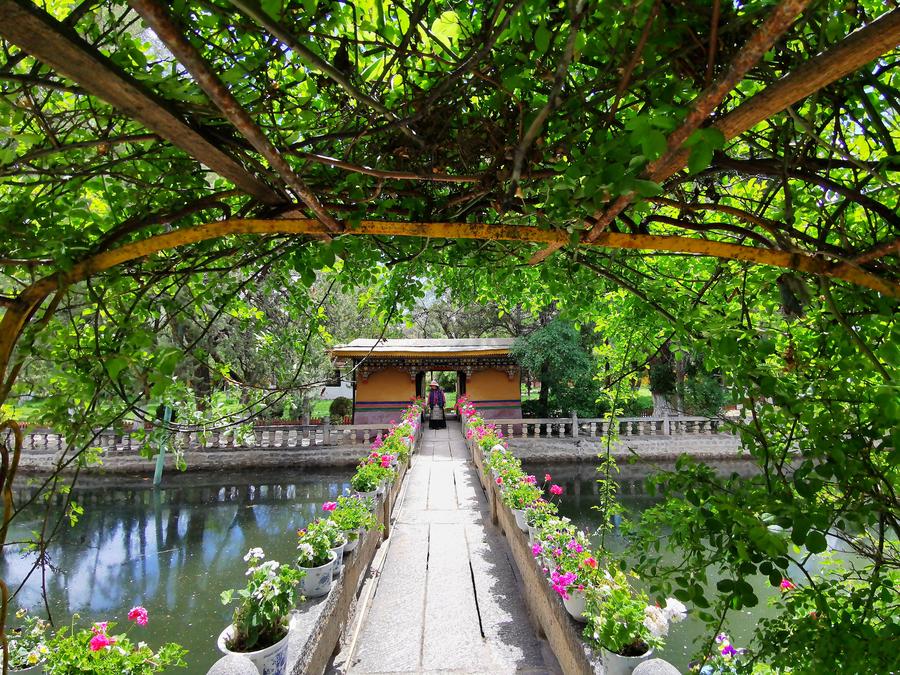


Cellphone photo taken on May 20, 2019 shows the scenery of Norbulingka Park in Lhasa, southwest China's Xizang Autonomous Region. (Xinhua/Purbu Zhaxi)
LHASA, May 10 (Xinhua) -- Fifteen precious cultural artifacts have been on display since the beginning of May in Norbulingka, a UNESCO World Heritage site in Lhasa, southwest China's Xizang Autonomous Region, with each telling a story of cultural exchange between the Tibetan and Han peoples.
The artifacts have been selected and presented by several cultural institutions, including the Potala Palace, Norbulingka, the Xizang Museum, the Drepung Monastery and the Ramoche Temple.
The canopy of thangka painting "The Great Compassion Dharma Raja" is adorned with auspicious cloud and Chinese dragon patterns, showing the high regard the central government of the Ming Dynasty (1368-1644) had for Shakya Yeshe, a monk of the Gelug sect of Tibetan Buddhism, as well as the friendship between them.
"The thangka has witnessed the interactions between and the integration of Tibetan Buddhism and the central government," said Selima, director of Norbulingka's cultural artifacts department.
It is a historic testament to the artistic exchanges and cooperation between the Han and Tibetan peoples, and it is visual proof that the region has been a part of China since ancient times, Selima added.
The smallest item on display is a gold ear pick excavated from a Tubo Empire (618-842) tomb in Lhasa's Damxung County.
He Wei, a deputy researcher at the regional institute of cultural relics protection, said that one side of the pick's handle is decorated with the image of an auspicious bird with large wings and a long neck from China's central plains, and the other depicts a standing lion from West Asia.
"The ear pick was made in central China during the Tang Dynasty (618-907) and later brought into the region as a gift or through trade," He said. A similar ear pick from the same period was also excavated from the underground palace of Shaanxi Province's Famen Temple.
Jade is a cultural symbol that also connects Xizang with central China. Its popularity gradually spread to Xizang during the Yuan Dynasty (1271-1368), with Yangzhi jade, a type of white jade named for its resemblance to mutton fat, being the most popular.
"To this day, the Tibetan word for 'jade' is still a transliteration of the Chinese word 'yangzhi'," Keru Pasang Norbu, deputy curator of the Xizang Museum, said while showing a white jade seal gifted to the region by the central government of the Yuan Dynasty.
A traditional Tibetan tea stand covered in small, round holes is also on display in Norbulingka. Researchers had not known how the object was used until they connected it with a high-footed bowl from the Ming Dynasty. When the feet of such bowls are inserted into the holes on the tea stand, the drinking vessels are supported and can be moved stably.
"The cultural artifacts on display have proved that our long history and splendid culture have been created by all ethnic groups living in this vast territory," Keru Pasang Norbu said.
点击右上角![]() 微信好友
微信好友
 朋友圈
朋友圈

请使用浏览器分享功能进行分享
